Writers's note: Obviously, there are software tricks that each device can do that are beyond the scope of this feature - mainly on the iPhone side, with 60fps video, for example, slow motion effects, and so on, plus there are differences in how burst mode is handled on each device and OS. And, notable on the 1020's side, there are differing delays between taking successive full quality shots. Here though, I'm putting all of these aside here, in order to look only at image quality - testing the sensors, the optics, the flash technology and the image processing algorithms.

Now, the iPhone 6 Plus outputs at 8MP in 4:3, which works out around 6MP in 16:9 (i.e. with the the top and bottom of the image cut off), while the 1020 outputs at 5MP in 16:9. So not identical, but close enough that I can still use the wonderful All About sites comparator tool and you'll still get a sense of comparing like with like.
| Note that the interactive comparator below uses javascript and does need to load each pair of images. Please be patient while this page loads, if you see a pair of images above each other than you've either not waited long enough or your browser isn't capable enough! |
Test 1: Midday sunshine, landscape
Deliberately taking this plane at a distance and looking at landscape detail in excellent light, though with heavy contrast differences because of the low winter sun. Here’s the full scene, as shot by the Lumia 1020:
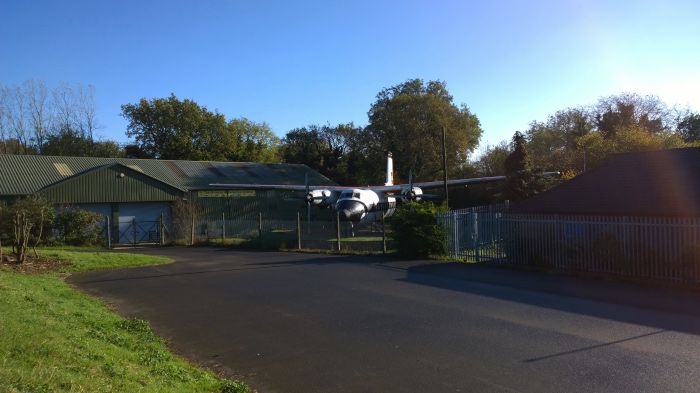
And here's 1:1 detail from the centre (ish) of the frame, using our famed interactive comparator, just wait to make sure the page has fully loaded and then use your mouse or trackpad pointer to compare the image fragments:


As you might expect under such ideal conditions, there's little to choose between the two photos, both of which are excellent. The 1020's has slightly more saturated colours, and the 6 Plus has slightly more pixel noise, but otherwise the two are level pegging, I'm not going to score either up or down.
Lumia 1020: 9pts, iPhone 6 Plus: 9pts
However, the iPhone 6 Plus camera still does well enough that it's worth continuing with other, more challenging tests. Starting with a use case that the iPhone should be pretty good at. Macros...
Test 2: Late afternoon sunshine, suburban landscape
Taking the opportunity out of the window(!), with a challenging mix of light and shade. Here’s the full scene, as shot by the Lumia 1020:

And here's 1:1 detail from the centre (ish) of the frame, using our famed interactive comparator, just wait to make sure the page has fully loaded and then use your mouse or trackpad pointer to compare the image fragments:
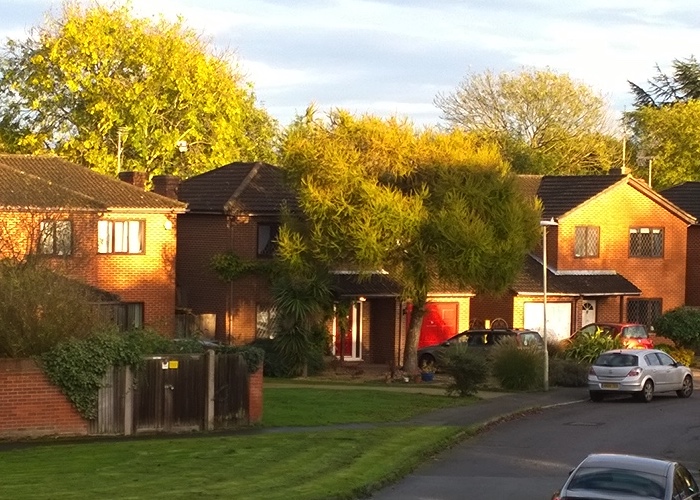
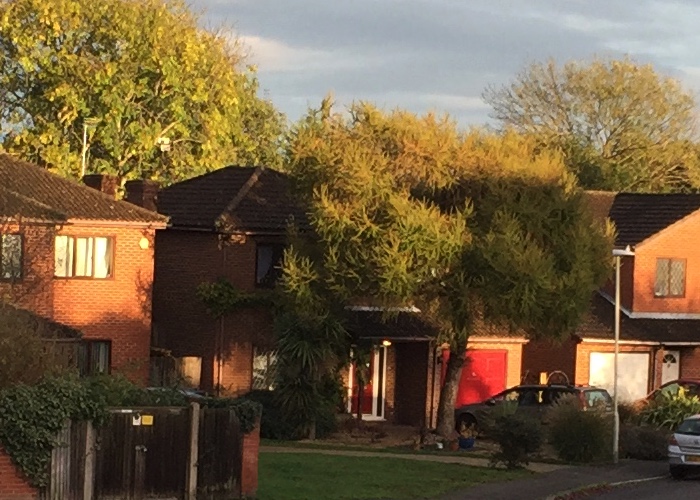
Across the board here, from colour to dynamic range to detail and noise/artefact levels, the Lumia 1020 photo is superior, and all despite a nominally lower output resolution. Not by a country mile, but certainly enough to notice. This is a great example of Nokia's oversampling system in operation, each image pixel has information from 6 or 7 underlying physical pixels on the sensor.
Lumia 1020: 9pts, iPhone 6 Plus: 7pts
However, the iPhone 6 Plus camera still does well enough that it's worth continuing with other, more challenging tests. Starting with a use case that the iPhone should be pretty good at. Macros...
Test 3: Sunshine, macro
A pretty bracelet in a window ledge, in full sun, so plenty of light. Here’s the full scene, as shot by the Lumia 1020:

And here's 1:1 detail from the centre (ish) of the frame, using our famed interactive comparator, just wait to make sure the page has fully loaded and then use your mouse or trackpad pointer to compare the image fragments:
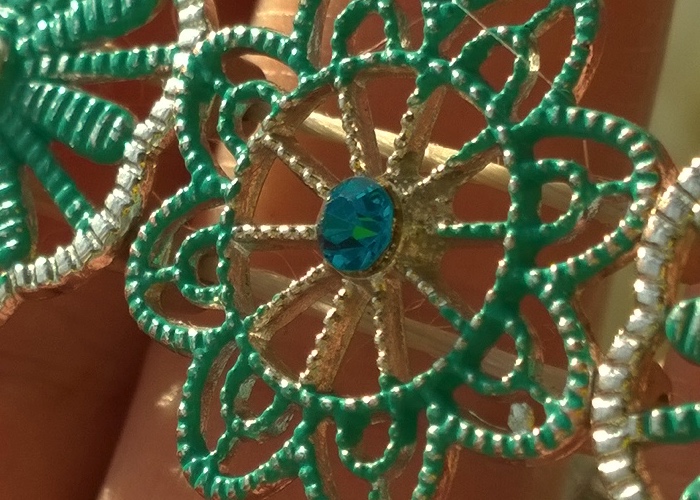
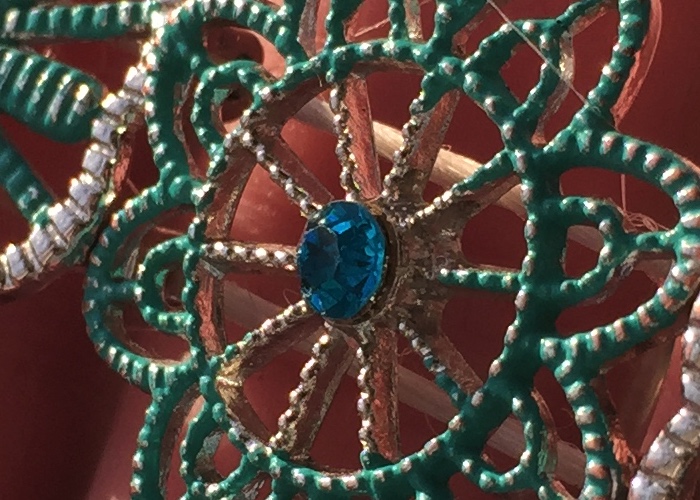
In fact, neither phone camera gets the colour of the painted detail right - it's actually turquoise, but in full sunlight, I can only imagine the challenges in handling the light. The gold paint and overall colouration looks more pleasant on the 1020, while the iPhone 6 Plus has more detail, thanks mainly to sharpening routines and the slightly higher native output resolution. A score draw overall.
Lumia 1020: 7pts, iPhone 6 Plus: 7pts
Test 4: Suburban scene again, late dusk
Quite dark to the eyes (see the moon and LED street light!), and a great test of the OIS and sensors/algorithms in each device. Here’s the full scene, as shot by the Lumia 1020:
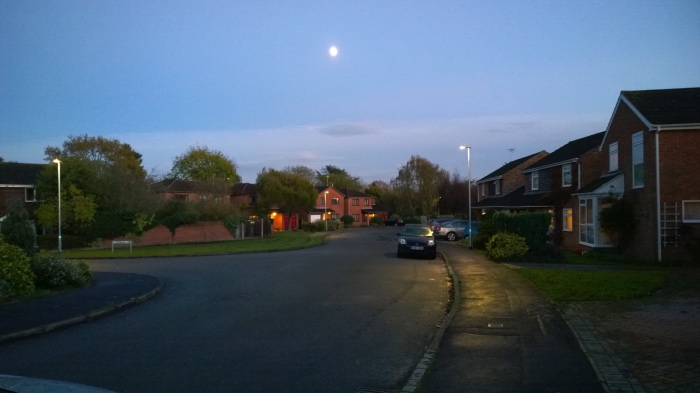
And here's 1:1 detail from the centre (ish) of the frame, using our famed interactive comparator, just wait to make sure the page has fully loaded and then use your mouse or trackpad pointer to compare the image fragments:
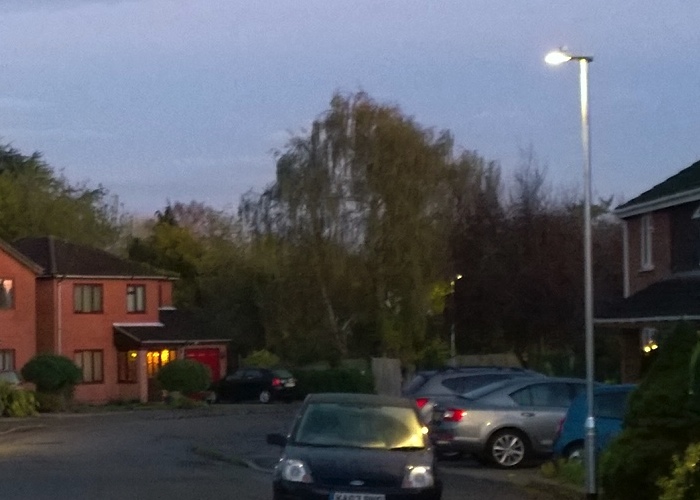
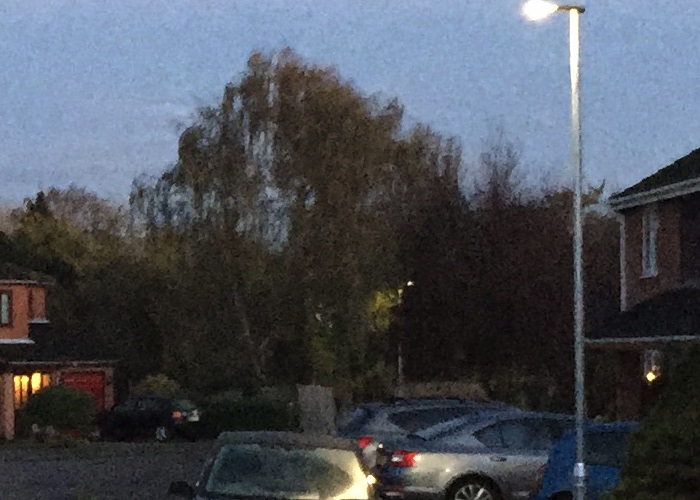
Stunning output from the 'PureView' Nokia Lumia 1020 here in extremely challenging conditions. How exactly can tech site after tech site, not least DxOMark, rate the 1020 below the iPhone 6 Plus for imaging? I'm honestly stumped. The 1020's oversampling sensor and optics are just streets ahead, as you can see for yourself here.
Lumia 1020: 10pts, iPhone 6 Plus: 7pts
Test 5: Indoor, artificial light, no flash allowed
A simply indoor test, first of all without flash, looking at OIS and sensor capability. Here’s the full scene, showing part of our family DVD collection (aka "Season six of West Wing is missing"!) as shot by the Lumia 1020:

And here's 1:1 detail from the centre (ish) of the frame, using our famed interactive comparator, just wait to make sure the page has fully loaded and then use your mouse or trackpad pointer to compare the image fragments:
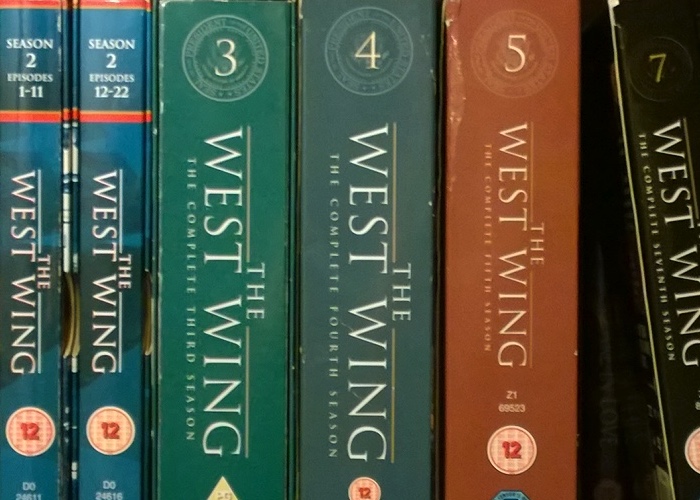
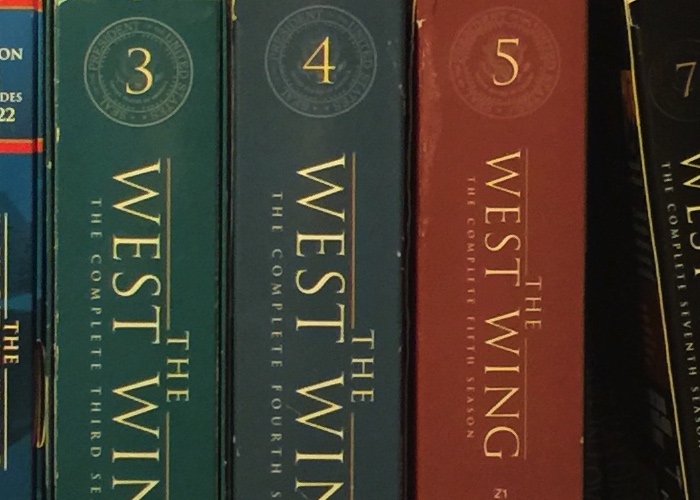
Although the iPhone 6 Plus image has more noise, the photo has more detail and the Apple device does better here, helped by the higher output resolution. Both photos are good though and both show evidence of OIS working well, look at the detail in the seal around the season number in the iPhone 6 Plus shot, for example.
Lumia 1020: 8pts, iPhone 6 Plus: 9pts
Test 6: Indoor, low light, static subject, flash allowed
Both devices should do well here, since the subject (at about 60cm) isn't moving(!) Here’s the full scene, as shot by the Lumia 1020:

And here's 1:1 detail from the centre (ish) of the frame, using our famed interactive comparator, just wait to make sure the page has fully loaded and then use your mouse or trackpad pointer to compare the image fragments:
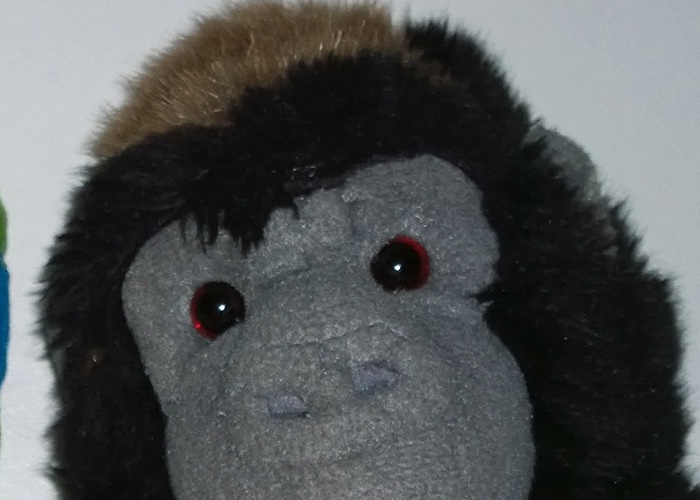

Interestingly, the iPhone 6 Plus version adds a golden tint that isn't there on the actual gorilla toy, while the 1020 nails the colouring. (In fairness to the iPhone, Apple would have optimised its two-tone LED flash for human faces, not toy gorillas....!) Interesting to note differences in focus and depth of field too, with the iPhone 6 Plus focussing on the overall backplane of the scene, while the 1020 detected a 'face' and optimised focus for the toy.
Lumia 1020: 9pts, iPhone 6 Plus: 8pts
Test 7: Indoor, low light, moving subject, flash allowed
My classic 'party mock-up' scene, shooting myself (deliberately) mid-laugh, with my face and drink in motion, this is the toughest test of a phone camera and you'll see why. Here’s the full scene, as shot by the Lumia 1020:

And here's 1:1 detail from the centre (ish) of the frame, using our famed interactive comparator, just wait to make sure the page has fully loaded and then use your mouse or trackpad pointer to compare the image fragments:


A crystal clear image from the Lumia 1020, as usual, with its proper Xenon flash freezing motion, just look at the detail on the bottle and on my face. In contrast, the LED flash in the Apple iPhone 6 Plus struggles as would any other LED-flash-equipped smartphone, with subjects horribly and unusably blurred.
Lumia 1020: 9pts, iPhone 6 Plus: 4pts
Test 8: Outside, shade, non-lossy zoom allowed
I think it's fair enough to have one test case in this feature where the Lumia 1020 is allowed to use the whole of its sensor resolution, in this case the 3x lossless zoom. Here’s the full scene, wanting to have a close look at the receptor on my Freesat aerial/dish, high up on an exterior wall in the shade:

And here's 1:1 detail from the centre (ish) of the frame, using our famed interactive comparator, just wait to make sure the page has fully loaded and then use your mouse or trackpad pointer to compare the image fragments:

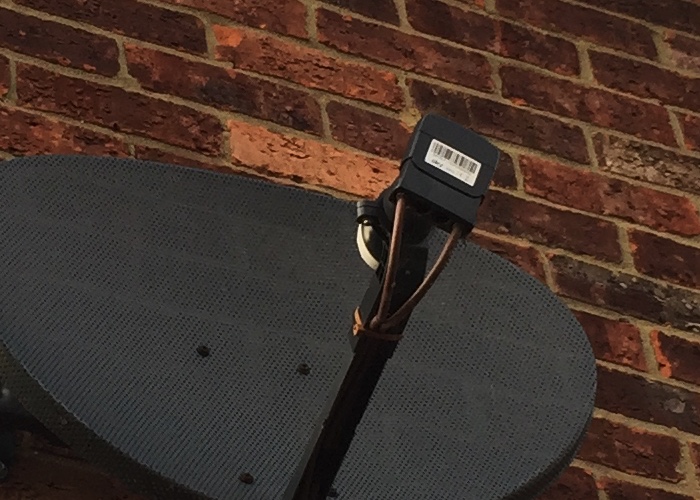
Although the barcode on the sensor's outside is somewhat blown out, the overall level of zoomed detail is impressive. Just look at the connectors, the cable-tie, etc. The iPhone 6 Plus, as with most other phone cameras, only has digital zoom, which doesn't give new information, it just blows up (and, to be fair, attempts some interpolation) existing sensor data. In the example above, therefore, I haven't multi-touch zoomed the iPhone 6 Plus at all. See below for an example where I did.
Lumia 1020: 8pts, iPhone 6 Plus: 6pts
Test 9: All zoom allowed
This time I wanted the iPhone 6 Plus to at least try to use what interpolative skills it had to enhance 'lossy' digital zoom, pitched against the 1020's lossless PureView zoom. Here’s the full scene, to give you some context:

And here's 1:1 detail from the centre (ish) of the frame, using our famed interactive comparator, just wait to make sure the page has fully loaded and then use your mouse or trackpad pointer to compare the image fragments:
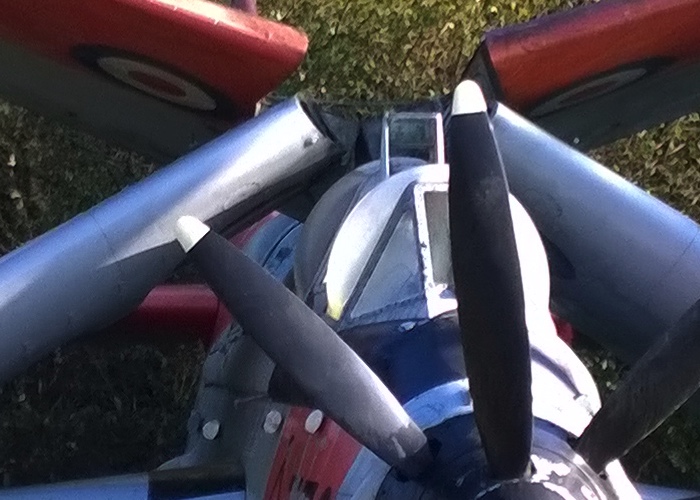

I don't think I really even need to comment here? The 6 Plus is doing what it is supposed to, creating a 8MP/6MP image from digitally created data from a low resolution section of its sensor. Whereas the Lumia 1020 produces something that is significantly clearer and more 'genuine'.
Lumia 1020: 9pts, iPhone 6 Plus: 5pts
Verdict
I do feel sometimes that I'm the kid shouting at the procession that "the emperor is naked!" while others see what they're told to see. Tech sites across the world proudly proclaim that the iPhone 6 Plus has the best smartphone camera and either ignore or mark down the Lumia 1020 and I ABSOLUTELY CANNOT SEE WHY, at least in terms of results. Yes, if you need several photos at maximum quality per second then the 6 Plus has some attractions, but if you have enough time to line up a shot in even a second or so then the Lumia 1020 is well ahead overall, across all light conditions and scenarios.
Which you'd expect from a camera sensor that's four times the size. Looking at image quality and detail then, and adding up my points scores above, out of a maximum of 90 we have:
- Nokia Lumia 1020: 78
- Apple iPhone 6 Plus: 62
The Apple iPhone 6 and 6 Plus camera is up with the 'best of the rest', including the Samsung Galaxy S5, the Sony Xperia Z3, but all of these are behind the Nokia PureView oversampling cameras, led by the 1020. I've now tested over a hundred smartphone cameras in the last decade and, quite simply, the Nokia Lumia 1020 remains top dog. Whatever other sites may say - and with the comparator above hopefully you can see the evidence for yourself.
